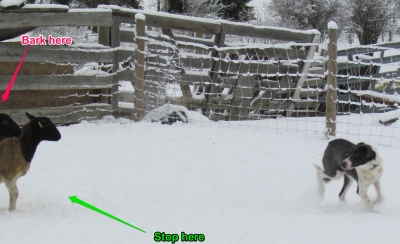At a recent training session, few and far between during the winter, I’ve noticed a trait in my number two dog Smoke. Smoke is a two-year-old New Zealand heading dog who is reasonably proficient with his outruns, gather and fetch. I’ve noticed that when he is running after some runaway sheep .or cattle that as he approaches he gives a bark when he is beside the sheep before turning in front of them and stopping them. This particular trait was also commented on during a cattle dog trial.
This particular trait seems unusual and one that I’ve not heard before on any of my other dogs. As with any new observation you tend to speculate as to the reason why. If you watch your dogs when they’re working there is a lot of communication going on which you should be able to interpret what the dogs trying to tell you. This can be position of tail, can be ears, it can also be the hackles up, any number of visual cues. This was the first audible cue that I have encountered and I’m thinking at this time is the dog is giving a warning. It is usually given when the dog is approaching the lead, in this case, sheep and I think that the bark is a momentary distraction to the sheep which allows him then to cut in front without them barren off because of the pressure. This means that he can be right in front of them and brings them to a stop.
This is going to be interesting to see if this is in fact what I just stated above. To be monitored and I will very likely report back on this at a later date.
